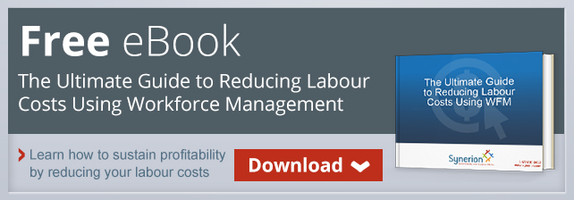 Improving worker productivity in the retail sector may seem easy to the outsider but those in the trenches know that measuring productivity for a workforce constantly in flux is a challenge. From the number of customers in a day to the current inventory, the measure of productivity is fluid depending on the day, week, or month. To start assessing retail worker productivity in your workplace, start with these four measurements.
Improving worker productivity in the retail sector may seem easy to the outsider but those in the trenches know that measuring productivity for a workforce constantly in flux is a challenge. From the number of customers in a day to the current inventory, the measure of productivity is fluid depending on the day, week, or month. To start assessing retail worker productivity in your workplace, start with these four measurements.
Focus on Tasks Rather than Hours
While measuring timekeeping is an integral part of running a productive company, focusing on hours worked can lead to some false conclusions. Simply looking at how many customers a cashier checked out in an hour may seem low until you factor in that the employee helped one customer find an item or restocked the counter during some downtime.
Having a “checklist” of what should be performed in a day or week can help managers assess productivity better than looking at a small slice of their overall workday. Rather than focusing on the number of hours to accomplish a task, look at the overall tasks per day to truly get a screenshot of worker productivity.
Measure Outcomes
Thomas Edison famously said “Just because something doesn't do what you planned it to do doesn't mean it's useless.” Innovation requires room to grow and mature. Focusing too intensely on daily or weekly productivity can squash that innovation in your workplace. When deciding on basic metrics to evaluate retail worker productivity, take a global view of what your business is trying to accomplish. Focus on metrics that measure outcomes rather than getting bogged down in the minutiae of meeting higher productivity goals. This allows managers and employees to take some risks to improve processes without sacrificing overall productivity.
Gauge Customer Satisfaction
It’s no surprise that customer satisfaction is a top metric in the retail space. It doesn’t matter how fast a cashier can check customers out or stock shelves if they drive customers away with a poor attitude, they simply can’t continue to be employed. Measuring that satisfaction can be tricky though. While customer surveys may tell part of the story, getting manager and co-worker feedback can also be helpful. Having a system in place that allows anyone – customer or employee – to review an employee through a variety of methods can help pull together a better picture of their customer satisfaction.
Set Employee Goals
When a business primarily hires seasonal and part-time workers, focusing too much on employee development may seem like sunk costs. Yet becoming employee-centric is exactly the stance a retail business needs to take to improve worker productivity. Engaged and satisfied employees are productive employees and helping employees achieve their goals can boost the efficiency of the entire company. Sit down with employees to explore their own goals and what it means for them to be productive. Whether that amounts to employees hoping to take management positions or simply taking on a new project, embracing those individual goals can boost your company goals. Don’t just measure an employees’ productivity in relation to the company. Take the time to also measure their productivity when it comes to their own development.
Retail worker productivity comes down to more than just some numbers on a monthly report. Truly productive companies delve into the data to determine the best way to serve both the organization and the employee. By focusing on tasks and outcomes while getting a more thorough understanding of customer experience, your retail business can put that monthly report to good use.
